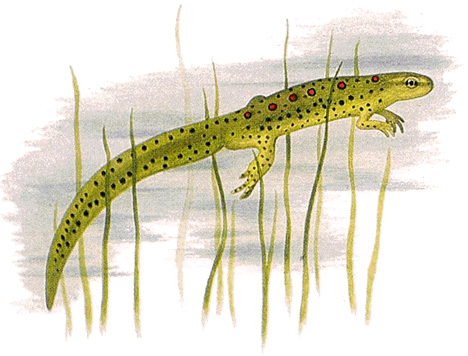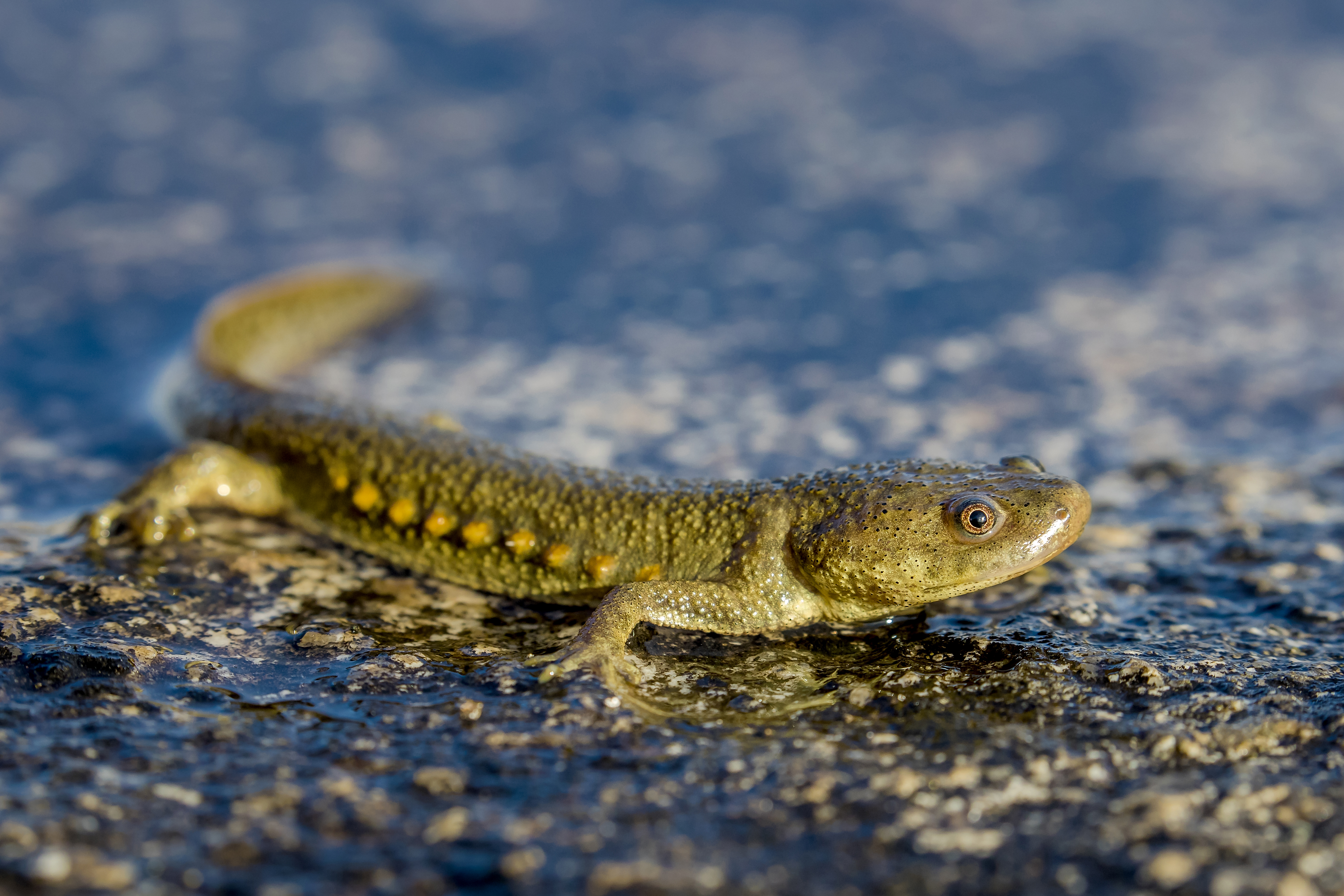Newt << noot >> is a small salamander with a slender body and four equal-sized limbs. Its skin appears rougher and drier than that of other salamanders. Like other salamanders, newts are amphibians, a group that includes frogs and caecilians. Newts can be found in North America, Europe, and Asia. The best known kind of newt in the United States is the eastern newt. It measures about 4 inches (10 centimeters) long.


The life cycle of a newt consists of four stages: aquatic (water-dwelling) eggs, aquatic larvae, terrestrial (land-dwelling) juveniles, and either terrestrial or aquatic adults. The tail of an aquatic adult newt is flatter than that of terrestrial newts to aid in swimming. In most parts of the world, adult newts only briefly return to the water to breed.
Newts hatch from eggs, which are laid in the spring. The eggs are laid individually or in clumps on underwater plants or rocks. The larvae (young) hatch after three to five weeks. They live in the water and breathe by means of external gills. After a few months of feeding on small invertebrates (animals without a backbone), the larvae have developed lungs and may take to the land through metamorphosis. Metamorphosis is a process in which extreme changes in form and appearance occur in some animals between the growing phase of life and the mature adult phase.
In eastern North America, terrestrial juvenile newts are called efts. Efts are typically bright orange and are easily seen on the forest floor. This coloration warns other animals that the newt is not good to eat. Their skin produces poisons that can sicken or even kill other animals. Efts may stay on land up to seven years before they return to water, where they remain, to live and breed as adult newts. Adult newts eat insects, worms, mollusks, and the eggs and larvae of amphibians, including their own species. Like other salamanders, if a newt loses a body part, such as a leg, it can grow the part back through a process called regeneration.
